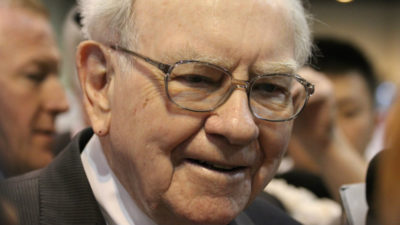One of the most competitive business sectors is food retailing. Margins are slim and supermarket chains depend on significant volume. Additionally, these companies must focus on efficient operations that reduce expenses to help bolster bottom lines. Here are five things to consider when investing in dividend-paying food retailers.
1. Is the company modifying its product offerings to meet changing demographics?
Loblaw (TSX: L) has acquired Arz Fine Foods, which operates a grocery store and bakery in Toronto, Ontario. The Arz business will operate as a unique operating branch of Loblaw. The business includes a 10,000 sq. ft. retail store, commercial bakery, food commissary, as well as distribution centre.
In 2009, Loblaw acquired premier Asian supermarket chain T&T, which currently has 22 supermarkets. In 2013, it debuted a T&T own-store line. It currently consists of 58 products and will be close to double that next year.
Speaking of the recent Arz acquisition, Mr. Vicente Trius, President of Loblaw, said, “This key partnership holds great promise as Canada’s Middle Eastern population and the Canadian taste for Middle Eastern food continues to grow.”
2. Is the company innovative in its customer-service focus?
Some of the top food retailers have retail loyalty programs designed to engage customers for long-term growth. Kroger (NYSE: KR) has its fuel loyalty program. Customers who shop at Kroger and use the Plus Card earn 1 fuel point for every $1 spent. In addition, customers can earn earn 2x fuel points on gift cards, no-contract wireless phones, and airtime cards. In essence, the company is targeting food shoppers via non-food initiatives.
3. Is the company focused on efficient distribution across its network?
Empire (TSX: EMP-A), parent of Canada’s Sobeys supermarkets, has state-of-the-art Sobeys distribution centres in Vaughan, Ontario, and Terrebonne, Québec. These distribution centres employ a fully automated warehouse and picking technology to provide exceptional product selection accuracy and customized store deliveries.
Overall the company has a national network of 26 distribution centres focusing on timely distribution to all its stores. Sobeys has made considerable investments in recent years in store and distribution infrastructure and business processes and systems. It has also made investments in sales and cost productivity programs.
4. Is the company expansion focused on building market share?
Whole Foods Market (NASDAQ: WFM) announced last year that in Canada it could open 40-plus stores. Currently, it has eight stores (B.C. and Ontario). Overall, Whole Foods opens approximately 30 stores each year. In 2012, the company opened a new 40,000-square-foot outlet in Markham, Ontario, north of Toronto. The design of this store is to look like a series of boutiques within a store.
Mr. John Mackey, Whole Foods Market co-chief executive, said last year, “By the time we actually get to the place of being able to open those stores, I expect the market will continue to evolve. So it probably is more than that.”
5. Is the company making strategic decisions to drive sales?
Metro (TSX: MRU), for the second quarter ended March 15, 2014 had sales of $2,554.8 million. This represents an increase of 1.7% versus the prior year. Its same store sales increased 1.0%. Part of the sales increase was due to the company reorganizing its Ontario store network. It closed or converted to its “Food Basics” discount banner 15 of its Ontario Metro stores. Furthermore it is operating Targets in-store pharmacies in Quebec under the Brunet name.
Today’s food retailers must continually find new ways to grow sales while reining in costs. Additionally, these companies must be cognizant of changing consumer demographics and its demand for different products. A continued focus on the above 5 issues by food retailers should position them for sustainable returns.







